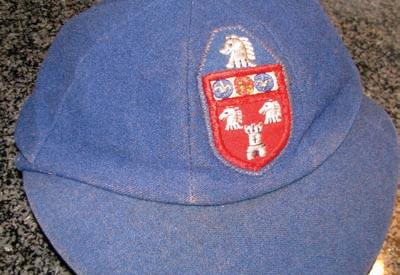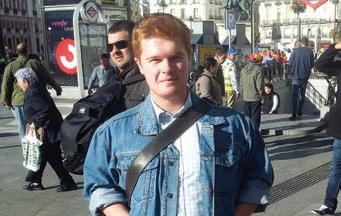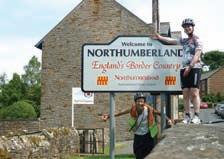
5 minute read
A History of the RGS in Its People
from ONA 90
A HISTORY OFTHE RGS IN ITS PEOPLE
by David Goldwater (51-62)
Advertisement
School House names most familiar to younger readers at large are Gryffindor, Slytherin, Ravenclaw and Hufflepuff, but since 1930, it is to Collingwood, Eldon, Horsley and Stowell that RGS students have pledged their loyalty and galvanized their best efforts in sport, music, debating and other areas.
David’s cap with the Horsley emblem Houses named Reds, Greens, Browns and Blues, indicated by varied colours in the cord trimmings on the school cap, were first established on the school’s move to Jesmond in 1906. In 1925, ER Thomas had presided over a ceremony marking the fourth centenary of Thomas Horsley’s will when the portraits of Lords Eldon and Stowell were unveiled in the school’s Main Hall (see photographs). In 1930, as the old crests conjoined of those of Queen Elizabeth I and the City of Newcastle were unified into a new crest granted by the College of Arms, the houses were renamed Eldon, Collingwood, Horsley and Stowell. Today, the house colours remain, adopting the symbols from the 1930 Coat of Arms, Eldon in green, symbolized by the castle, Horsley in blue, taking on the head of the horse, Stowell in red represented by the lion whilst Collingwood now bears the brighter colour of yellow, adopting the Fleur de Lys. Enthusiasts of the House system may be interested to know that last year the overall House Competition was won by…Eldon!
Initially, the Houses were geographically allocated, but with sons and brothers allocated the same House, this became less consistent. The original allocation was roughly Gateshead and south of the river, the preserve of those in Stowell. Collingwood’s area was Gosforth and Ponteland. Eldon was for those in Heaton and east down to the coast and Horsley boys lived in Jesmond and Fenham.
So who were these worthy men, honoured in perpetuity in the RGS House system? Chronologically and showing no bias (though a Horsley boy am I), Thomas Horsley (1462-c1545), the school’s founder was a corn merchant who lived through the reigns of Edward IV and V, Richard III, Henry VII and VIII. Outdoing London’s Whittington, he served as Mayor of Newcastle five times during the reign of Henry VIII. In 1525, he made his will, endowing money for the establishment of a free school in Newcastle on his death and that of his wife. He was a hugely powerful man and did much to establish Newcastle as the wealthy and influential town it had become by Henry’s reign. In these Renaissance times, the foundation of our school was a reflection of that influence. Later, in 1600 when Newcastle obtained its ‘Great Charter’ in the reign of Queen Elizabeth, the charter included directions for the establishment of a ‘Royal’ Free Grammar School, ‘a body corporate by the name of ‘The Master and Scholars of the Free Grammar School of Queen Elizabeth in Newcastle upon Tyne’’.
Above: William and John Scott
Plaque located below the window on a Jacobean house situated in Sandhill, Newcastle upon Tyne William Scott (1745-1836), one of 13 children (later 1st Baron Stowell), probably would have been in Stowell as he was born in Heworth in 1745. A notable maritime and international lawyer it was not until he was in his 30s that he began a serious study of law, but his rise to success was rapid. Within 12 years he received a knighthood and had become Advocate-General. Among his other achievements were his parliamentary seats at Downton(!) and Oxford University, as well as his Fellowship of the Royal Society, the Privy Council and Judge of the High Court of Admiralty. In 1821, upon the Coronation of George IV, he was raised to the peerage as 1st Baron Stowell of Stowell Park in Gloucestershire. At the age of 76, he thus took the seat in the House of Lords, but seldom participated actively in debate. He lived to the age of 90, at which time the baronetcy became extinct. Only one of his four children, Mary Anne, survived her father, two having died in infancy.
His younger brother, John Scott (1751-1838) born in Love Lane, Newcastle, was to become 1st Earl of Eldon. Their father, William had become a prosperous Hostman (and Freeman) within the thriving coal trade, a career which John might have entered, as did his other older brother, Henry, who also attended the school. He might also have taken holy orders, but through the intervention of his elder brother William, then a college tutor at Oxford, he progressed rapidly through his legal studies. A colourful and romantic episode is well documented with John’s elopement in 1772 with Bessie Surtees, the daughter of a wealthy Newcastle banker (see photograph of plaque). A story in itself, it all ended with both families’ reconciliation. After Scott had entered parliament in 1782, he was appointed Solicitor-General, knighted and promoted to Attorney-General. Entering the House of Lords in 1801 (the same year as his brother William) as Lord Eldon he ascended the woolsack as Lord Chancellor of England. Later in 1821, Lord Eldon had been created Viscount Encombe and Earl Eldon by George IV. He lived a long life into the reign of Queen Victoria. The Eldon and Encombe viscountcies are still in existence, John Francis Scott, the fifth Viscount succeeding in 1976.


Cuthbert Collingwood
Cuthbert Collingwood (1748-1810). As the Headmaster wrote in one of his excellent blogs (see www.rgs.newcastle.sch.uk) locals are totally biased as to who really won the Battle of Trafalgar. Collingwood, born in a house on the Side, Newcastle, completed Nelson’s work in the most altruistic and bravest manner, so that his memory is still respected in Spain. His early education was certainly at the school but, by the age of 13, he was at sea. His life is a glorious litany of naval and military valour. Unlike Nelson, he was rarely on dry land and his political, diplomatic and military judgment far outshone that of his superior commander. Raised to the peerage as 1st Baron Collingwood of Caldburne and Hethpoole in Northumberland in 1805, exhausted and in illhealth, he died, characteristically on board ship off the coast of Menorca in March 1810 at the age of 61. He is buried beside Nelson in the crypt of St Paul’s Cathedral. John Dobson’s 1845 monument to him welcomes all who enter the mouth of the Tyne.
In a short article, it is impossible to do justice to the four men immortalised in the school’s Houses, but their memory is suitably recorded in books, plaques, monuments, statues and portraits around the world. In particular, Collingwood is honoured throughout the nation in both school names and Houses. Royal Hospital (Naval) School at Holbrook has 11 Houses for its 700 students, so with the RGS now educating over 1,300 students, is it time to consider adding further Houses to the ‘Famous Four’? Surely, no shortage of candidates!






